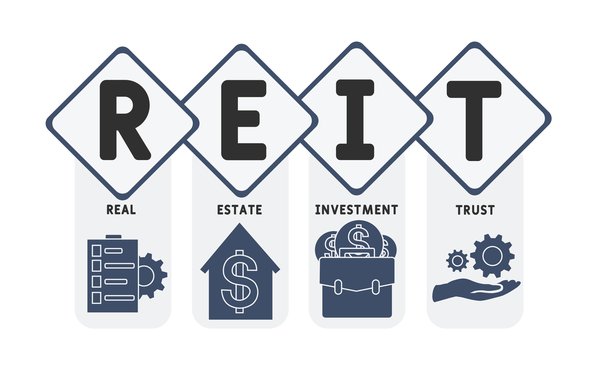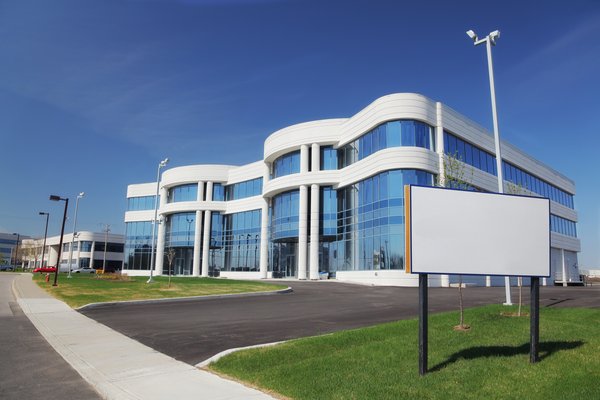Infrastructure real estate investment trusts (REITs) own and manage infrastructure-related real estate. These property types are essential to the economy because they help support the movement and storage of data and energy.
Here's a closer look at infrastructure REITs, their advantages and risks, and some companies that investors should consider.

Understanding infrastructure REITs
Infrastructure is one of the unique real estate investments. It typically doesn't include traditional commercial real estate such as buildings or land. However, it's still physical property leased to tenants. The most common infrastructure owned by REITs includes telecommunications assets such as cell towers, fiber optic cable, and small cell nodes. REITs can also own various types of midstream energy assets, including oil and gas pipelines and processing facilities.
Infrastructure REITs make money by leasing their infrastructure to tenants, typically under long-term contracts. The long-term contracts supply the REITs with steady cash flows to support dividend payments.
Advantages of investing in infrastructure REITs
Infrastructure REITs benefit from relatively steady demand for their assets. Telecom companies need communications towers to support mobile networks, while energy companies require pipelines to transport oil and gas. Because of that, companies typically sign long-term leases with REITs to guarantee access to essential infrastructure.
Meanwhile, demand for infrastructure continues to grow. An increasingly digital economy needs more infrastructure to support faster networks like 5G. Likewise, rising energy demand can fuel the need for more energy infrastructure.
Risks of investing in infrastructure REITs
While infrastructure REITs typically benefit from stable and growing demand, they're not without risk.
Tenant risk has affected infrastructure REITs. For example, REITs focused on energy infrastructure have experienced the effects of tenant bankruptcies during commodity price crashes that have left tenants unable to meet their lease obligations. REITs focused on communications infrastructure have faced issues when tenants merge and no longer need as much infrastructure to support a combined network.
Interest rate risk also is an issue common to the REIT sector. Rising interest rates have two notable effects on REITs. First, rising rates can increase interest expenses if a REIT has a lot of floating-rate debt or significant near-term debt maturities.
In addition, rising interest rates tend to weigh on REIT stock prices because they're yield-focused investments. Rising interest rates increase the income yield on lower-risk investments such as bonds. To compensate for their high-risk profiles, REITs need to offer higher dividend yields. That's why their stock prices tend to decline as interest rates rise.
4 infrastructure REITs to consider in 2024
According to the National Association of Real Estate Investment Trusts (NAREIT), there were six publicly traded infrastructure REITs as of early 2022. Here's a closer look at the four largest ones, which all focus on communications and data infrastructure:
| Infrastructure REIT | Ticker Symbol | Market Cap | Company Description |
|---|---|---|---|
| American Tower | (NYSE:AMT) | $101.3 billion | A global tower and data center REIT. |
| Crown Castle International | (NYSE:CCI) | $62.9 billion | A U.S.-focused tower REIT. |
| SBA Communications | (NASDAQ:SBAC) | $31.3 billion | A global wireless infrastructure REIT. |
| Uniti Group | (NASDAQ:UNIT) | $1.4 billion | A REIT focused on fiber infrastructure. |
1. American Tower
American Tower has grown out of its name over the years. The leading REIT entered 2022 with roughly 220,000 communications sites spread across more than two dozen countries. In addition, it owns a growing portfolio of data centers. In late 2021, it purchased DataSite, which owns two multi-tenant data centers in the U.S. American Tower also closed its acquisition of data center REIT CoreSite Realty (COR -0.3%) in a $10.1 billion deal, adding another 25 data centers to its portfolio. The company's international expansion and move into data centers have diversified its portfolio and transformed it into a global leader in data infrastructure.
American Tower has become one of the largest global REITs. It has steadily acquired tower portfolios from telecom companies, built new towers, and added tenants to its sites. This three-pronged growth strategy has enabled the company to increase its revenue and adjusted funds from operations (AFFO) at a mid-teens compound annual rate over the past decade. Meanwhile, the REIT has increased its dividend at more than 20% annually since 2012. With its recent move into data centers and a strong balance sheet, American Tower should be able to continue growing at a double-digit annual rate for the next several years.
2. Crown Castle International
Crown Castle sold its international assets in 2015 to focus on the U.S. market. It entered 2022 with more than 40,000 communications towers in the U.S. In addition, the company also had 115,000 small cell nodes on-air or in development and 80,000 route miles of fiber -- assets that are crucial to supporting 5G networks.
Crown Castle has spent $20 billion on tower and fiber acquisitions over the past decade. In addition, it has invested $11 billion to build out additional tower and fiber assets. The company sees another decade-long investment cycle ahead as its customers develop next-generation wireless networks such as 5G. Because of this, Crown Castle predicts it can increase its dividend at a 7% to 8% annual rate over the long term.
3. SBA Communications
SBA Communications owns a global portfolio of wireless communications infrastructure, including towers, buildings, rooftops, distributed antenna systems, and small cell nodes. As of early 2022, its portfolio consisted of more than 35,000 communications sites across 16 markets in North and South America, Africa, and the Philippines.
SBA Communications generates revenue from site leasing and site development. The company leases space on its towers and other structures to wireless service providers under long-term contracts to house their communications equipment. In addition, the REIT assists wireless service providers in developing their networks through site acquisition, construction, and equipment installation. These two businesses have enabled the company to steadily increase its revenue, earnings, and dividend over the years.
4. Uniti Group
Uniti Group focuses on acquiring and constructing mission-critical communications infrastructure. As of early 2022, it owned 128,000 route miles of fiber, 7.6 million strand miles of fiber, and other communications real estate such as small cells in the U.S. It's one of the 10 largest fiber providers in the country.
Uniti Group has two main growth drivers. First, wireless carriers need more fiber and small cell nodes to support the faster speeds of 5G networks. In addition, the company should benefit from growing investment in broadband infrastructure (fiber to the home) spurred by passage of infrastructure legislation in the U.S. These two catalysts should enable Uniti Group to continue expanding its fiber network.
Related investing topics
Large infrastructure REITs see a lot of growth ahead
Infrastructure is crucial to the global economy. That's providing REITs with steady demand for their existing infrastructure and ample opportunities to expand. With infrastructure spending expected to increase in the coming years, these infrastructure REITs should be able to continue growing at above-average rates.



































